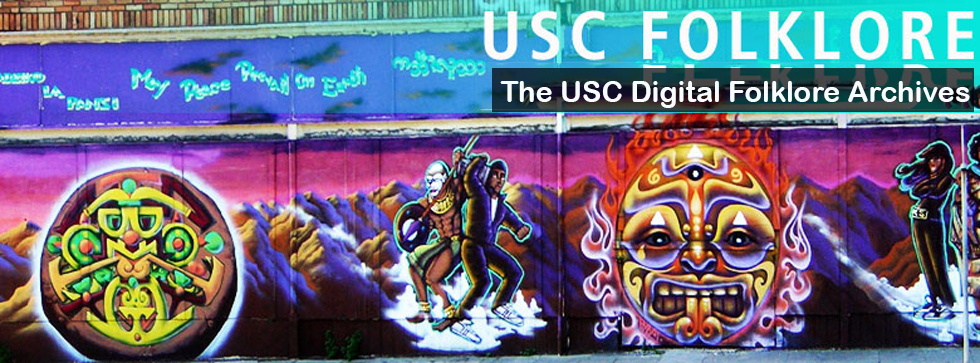Context:
Informant J is a 73 year old Mexican-American man and is the collector’s grandfather. He is from San Jose, California, but his family moved there from parts of Texas and Mexico. For the majority of his life, J was a manager at a regional grocery store, and studied art in college with a focus in jewelry making. J is now retired and his hobbies include guitar playing, metal working, and reworking vintage cars.
Text:
(Please excuse typos, this is an unaltered text message from the informant): “My parents said they were just finishing up a picnic at Alumn Rock park on the East side of San Jose and were getting ready to head home when a man who looked like he had been dug up (his clothes was old and tattered and resembled clothes from the cowboy days. He came up to their car window and just stood there not saying a word but staring in a daze. They believe it was the ghost of Juan Murrieta who lived during the late 1900’s. He was famous for robbing people in that area of the park. My dad started the car and got the hell out of there! My parents were very scared and they were familiar with the legend of Juan Murrieta and never stopped talking about the incident!”
“Ps: The cowboy did have an old style revolver as well!”
Interpretation:
I’d like to note that people often confuse Juan and Joaquin Murrieta, and that my grandpa was almost certainly referring to the latter. I did some research after being told this story, as I hadn’t heard of either figure until now. Juan was a pioneer, whereas Joaquin is a Mexican figure commonly known as the Robin Hood of the West. More specifically, stories about Murrieta rose in California during the Gold Rush. I find it interesting that my great-grandparents claim to have seen Joaquin Murrieta, because they associated something strange with something they already knew about (ghosts), and their knowledge of it is heavily influenced by culture. Even though my family was Mexican-Texan, they had heard enough about this specifically Mexican-Californian legend in the little time that they lived there that they assumed the figure was him. What’s more, this story hints at a combination of folkloric beliefs, as my great-grandparents claim to have seen a kind of undead version of Joaquin Murrieta, who is more of a legend than a popular ghost. There are debates over whether he existed, but stories of seeing him are rarer. But my great-grandparents seem to have believed in ghosts in general, so this memorate only furthered their personal view of the world.
